Twenty-five years ago, the King of the Hill at BMW was the 8 Series coupe. It’s a crowd-pleaser at Radwood today, but it was a tough sell back in the day. That didn’t stop fans from wondering when BMW would make a full-on M version of that car—something that only happened in prototype form.
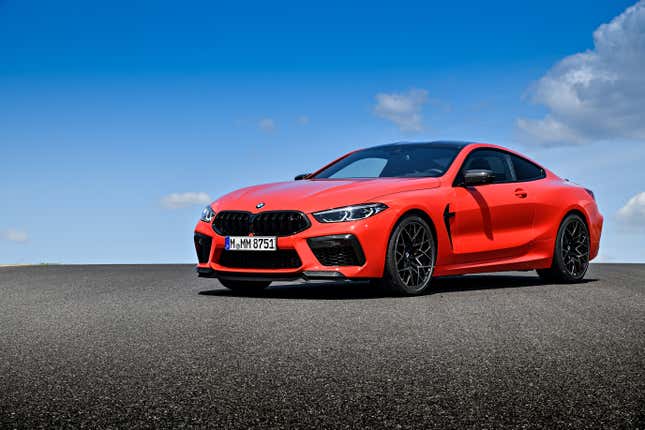
But now it’s 2019, the 8 Series is back, and it brought a real, honest-to-God M8 with it. Around this time last year, I took a quick trip to test the then-new M850i xDrive and found it to be worthy of its position at the peak of BMW’s lineup. Still, I knew then it would get unseated by the M8 Competition—a 617 horsepower, track-focused version of the same car with an even bigger price tag.
As much as I liked the M850i last year, I’m here to say this now: The King is dead. All hail the King.
(Full Disclosure: BMW flew me to Lisbon, Portugal then shuttled me to Faro where they put me up in a very nice hotel and fed me lots of delicious prawns. They also let me drive some cars, which is apparently my job.)
Specs That Matter
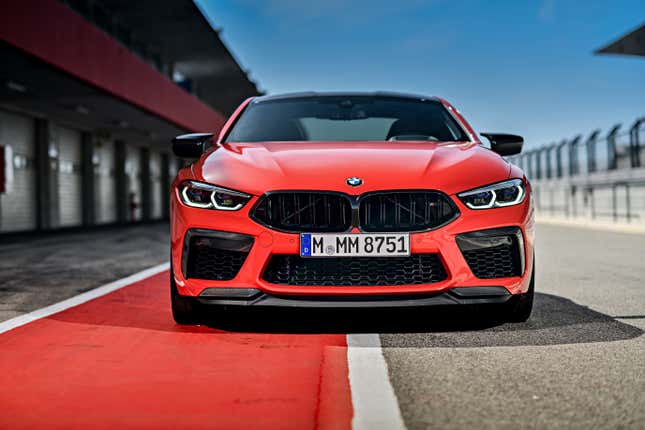
Like the M850i, the new M8 (I know, the names are confusing) gets the latest 4.4-liter TwinPower turbo V8 engine.
In most of BMW’s current lineup, the TwinPower nomenclature means that it is a twin-scroll turbo, not a twin-turbo. Annoyingly in the M8 there are two of these TwinPower turbos, literally making it a twin twinpower turbo.
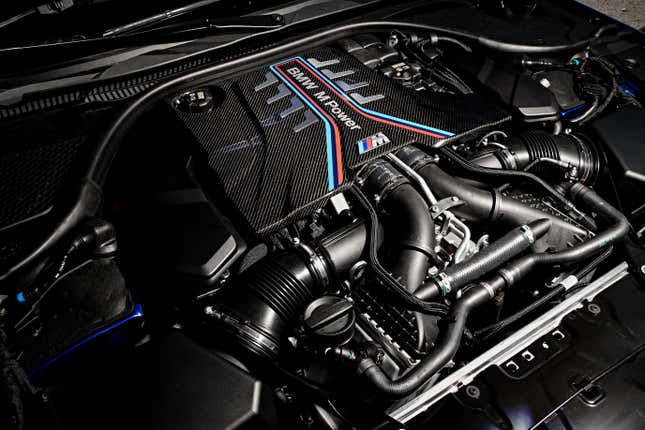
Naming hiccups aside, this beast of a motor produces 600 HP and 553 lb-ft of torque from 1,800 to 5,700 RPM in the M8. That’s a sold 77 HP gain over the M850i. Opt for the M8 Competition and you get bounced up to 617 HP and the same amount of torque, though it’s usable for another 160 RPM.
In terms of power, the M8s aren’t messing around. The Competition is also equipped with stiffer engine mounts and an M Sport exhaust.
The prodigious power allows the 4,295-pound M8 to accelerate from 0-60 mph in a blazing 3.1 seconds with the Competition version able to knock a tenth of that time to go an even 3.0 seconds to 60. With launch control, we’ve even seen some 2.8-second runs.
Top speed for both versions is limited to 155 mph, but as the old racing adage goes, speed costs money. How fast do you want to go? If your answer is 189 mph then you can opt for the $2,500 M Driver’s package—ordering this will allow you to reach a top speed of 189 mph.
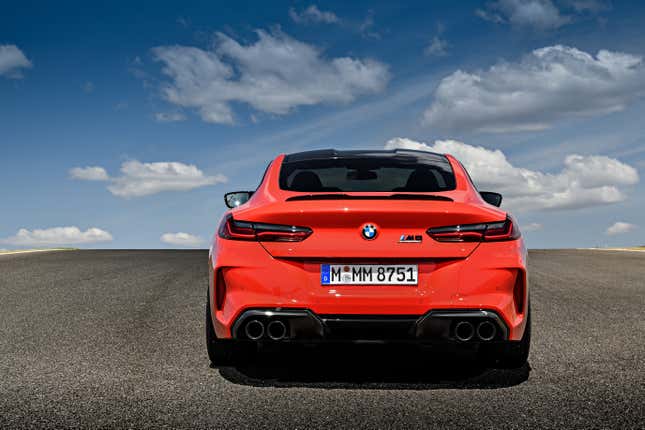
If you plan on testing out your M8’s top speed (and don’t wanna risk jail just to make your commute more interesting) then BMW figures that you best have the skills to match. So they also throw in a voucher for an M School driver training program at one of the two BMW Performance Center driving schools, in Spartanburg, South Carolina or Thermal, Calif. That’s a solid deal.
To put all this power to the ground BMW has stuck with its eight-speed, ZF-sourced automatic transmission. No dual-clutch, no manual here, but this auto is very good. Probably the best right now.
It sends power to all four wheels via the M Division’s take on the xDrive all-wheel-drive system. The cool thing about this transmission is that it is networked with the navigation system, so when there is a route programmed in, the transmission will use the route data to intelligently plan out what the road ahead looks like and plan shifts accordingly.
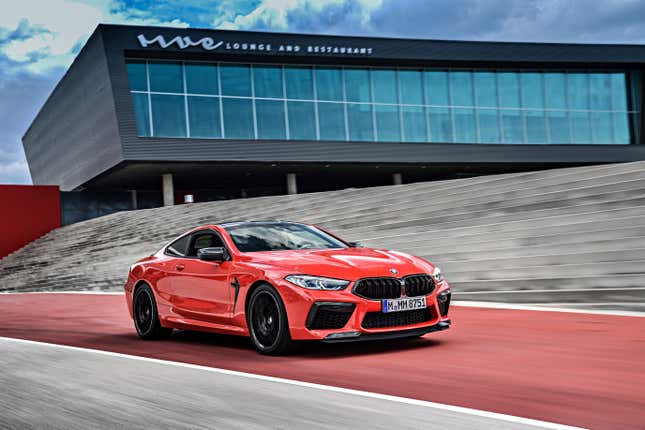
For example, if you are coming up to a series of corners the transmission will hold the gear as opposed to doing an unnecessary gear change between corners. Cool stuff.
Of course, it ain’t cheap to be the king. An 840i Coupe starts around $88,000; bump that to $112,000 if you want the M850i. For the full-on M8, that’ll be $133,000, please, and $146,000 if you need the M8 Competition.
Looks That Don’t Match The Price Tag
Now before we get to the good—and there is a lot of good—let’s start off with the not so good. As we roll up to the Algarve International Circuit I get my first look at the big, bad, beast of a car that is the M8 in the flesh. My initial thoughts? Meh.
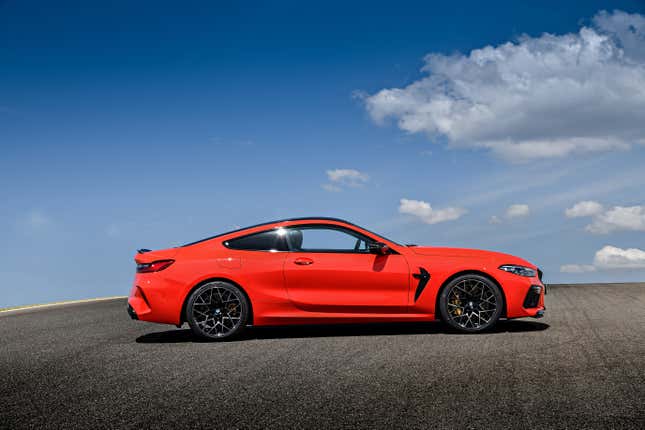
For me, any car that rolls out of BMW’s M division should mean bulging fender flares, massive vents and side skirts. The supposed top dog M8 has almost none of those things.
Okay, the front and rear bumpers are adorned with some aggressive intake scoops and there are some racy looking quad exhaust tips, but there’s nothing that makes the M8 really stand out from its lesser sibling the M850i.
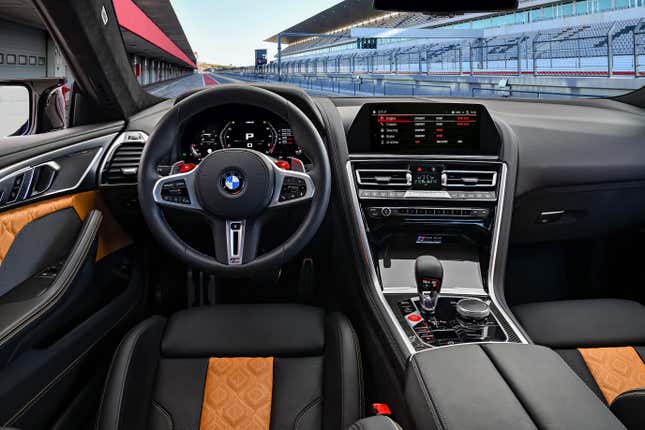
That meh feeling continues into the cabin. Now mind you, the M850i’s interior is nothing to sneeze at. It’s very well appointed with top-shelf materials covering every surface, great seats and what’s probably the best in class infotainment system. But that’s kind of the problem. The M850i’s interior is good; so it leaves the M8 nowhere to go to differentiate itself.
Now you might be thinking: Holland, you drove the M850i almost a year ago, maybe your memory is failing and there’s more difference between them than you think. I would generally agree with you on the first part. However, BMW had us drive the new M850i Grand Coupe out to the circuit, so I had just spent a few hours in an M850i variant before jumping straight into an M8 at the circuit.
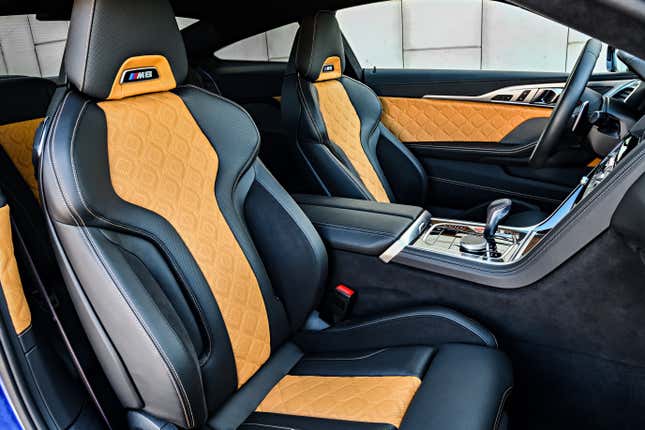
To me, the M8 just didn’t feel substantially more special than the M850i and for the coin here, it should.
Styling aside, the M division has not lost its way entirely and they manage to deliver on the most import bit: speed.
Tech To Go Very Fast
Power ratings alone don’t do the M8 justice; there’s a lot going on to push it above the M850i.
In the M8 the turbos are positioned within the V of the engine block to help improve thermal efficiency and throttle response. This layout, known as a “hot V” turbo placement, was pioneered by Ferrari’s Formula One program in the early 1980 and resurrected with devastating effect by Mercedes F1 in recent years.
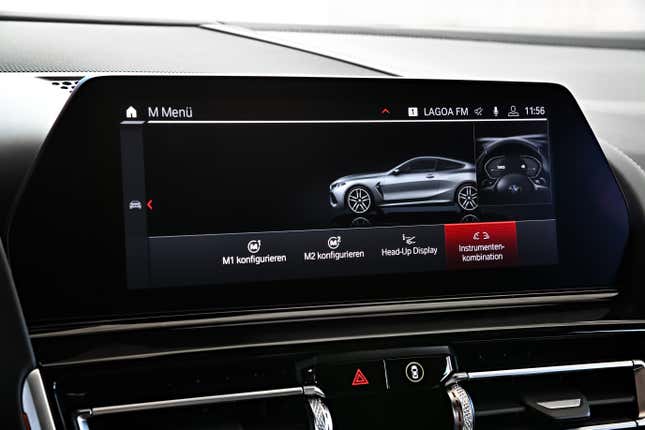
Several manufacturers (Porsche, Mercedes, BMW, even General Motors lately) have started using this layout in their road-going offerings. This placement also allows for cross-bank exhaust manifolds, which additionally improve turbocharger and throttle response by reducing the distance the exhaust gases need to flow to reach the turbochargers.
Finally, BMW needed to upgrade the cooling systems to keep all those ponies chill. To accomplish this, the M8 has two separate cooling systems. Water-to-air intercoolers help reduce the temperature of the incoming air charge. This circuit is kept completely separate from the one dedicated to cooling the engine and turbochargers. Additional engine and transmission oil coolers help keep the temperatures under control under hard track use, although I doubt many of these are really going to venture anywhere near a track.
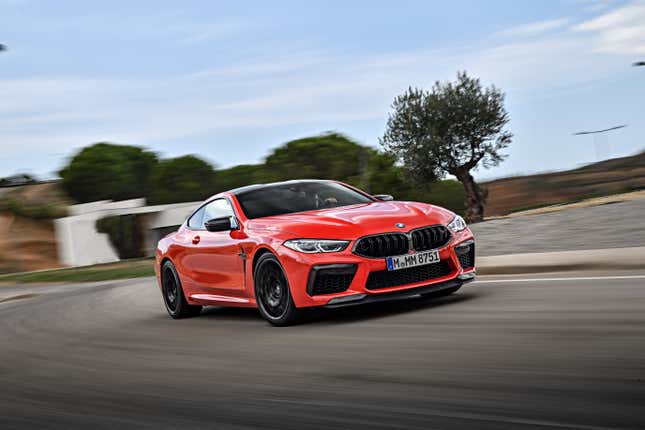
It’s the same reason you don’t see many M5s on track. The M8 is a six-figure grand tourer and the demographic for these cars is not typically your hardcore track rats. If they do want to hit the track from time to time, they usually have the extra coin to have a spare M4 waiting in the wings to take out. But that in no way negates what the M8 can do.
As I have stated on these pages many times before, in my estimation BMW’s xDrive system is the best AWD setup on the market today. It’s a 100 percent rear-biased system that only sends power to the front in the event that the rears lose traction. Here it’s partnered with the Active M differential which chooses which wheel to send power to based on available traction.
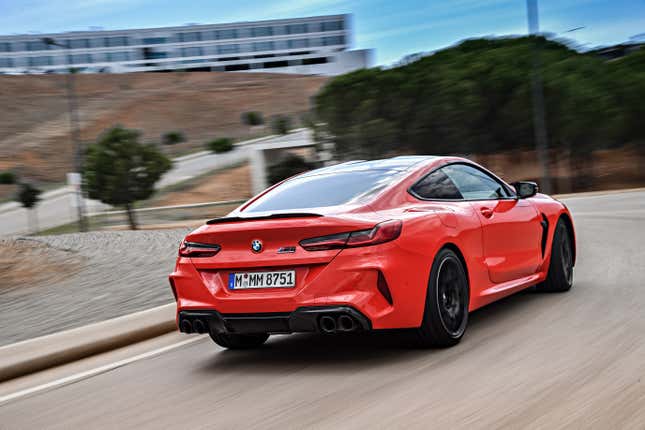
On The Track
So we could test all of this tech goodness out, BMW lets us loose on the Algarve Circuit just outside Portimao in southern Portugal. It’s is more commonly just called Portimao in racing circles and has been home to many top GT, touring car and motorcycle races, and even hosted F1 pre-season testing for a short bit.
It’s a very fast, undulating circuit with serval flat out blind corners where you carry a huge amount of speed over bind crests and into the unknown. It’s the perfect place to let the big M8 stretch its legs.

BMW brought its ace works driver Nicky Catsburg out to act as a guide for the assembled journalists, although as Nicky and I have both raced in WTCC and WTCR, when he and I were on track together there was much less “guiding” and more “racing.”
The M8 Competition was the only M8 variant available to us for track testing. I found it well suited to the fast corners of Portimao. In addition to the stiffer engine mounts, the Competition also has settings for increased front negative camber and the rear toe-link uses ball-joints instead of rubber bushings. All of these upgrades help with handling and give the driver more feedback and the confidence to really push.

Speaking of feedback, I was also really impressed with the M8’s electronic steering. It is super accurate while transmitting enough feedback for me to really lean on the rubber (rated at 275/35R20 front and 285/35R20 rear).
The steering has a Comfort and Sport mode that allow for varying degrees of feedback and driver effort. All of these things combine to make the large M8—and it is a beefy car—feel far smaller and more agile than you would otherwise expect for a car this size. I wouldn’t exactly call the M8 tossable, but it’s not an elephant in ballet slippers either.
Let’s Talk Brakes
One of the main features of the Portimao circuit is the near one-kilometer long front straight the ends in a sharply downhill braking zone. This gave me a chance to really work out this car’s integrated brake-by-wire system. The system, which combines the brake pedal, booster and control functions all in one unit, saves 4.5 pounds over a standard braking system.
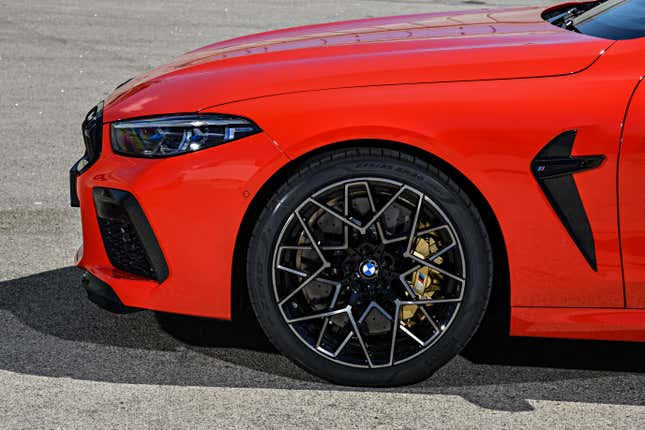
BMW claims that the electric actuator is faster and gives a more precise brake response and pedal feel in all conditions. But all I kept thinking about was that my brake pedal was now just one big button, just like the one on my Xbox controller—an on/off switch for stopping when I play Forza.
But BMW’s brake by wire system is not that. In fact, I had a really hard time telling that the brake system was anything but a traditional system.
The most effective way to brake at the limit in a modern ABS-equipped car on a race track is to apply enough pressure to get maximum brake force without engaging the ABS. (ABS doesn’t help you brake faster, it was designed to help you keep control of the car if a wheel locked under braking.)

The tricky bit is modulating the brake pedal right at that point just before ABS kicks in. In the M8 I had no issues finding that point every single time. In fact, I may be imagining it, but it actually might have been a tiny bit easier with the BMW system. High praise.
The neat thing with an electronic braking system is that it gives you the ability to change the settings to the drivers liking. The M8 offers two brake settings, Comfort and Sport. Comfort gives you a bit of a squishy, luxury car pedal feel. The Sport mode, which I preferred even for street use, is far stiffer and precise.
On Track
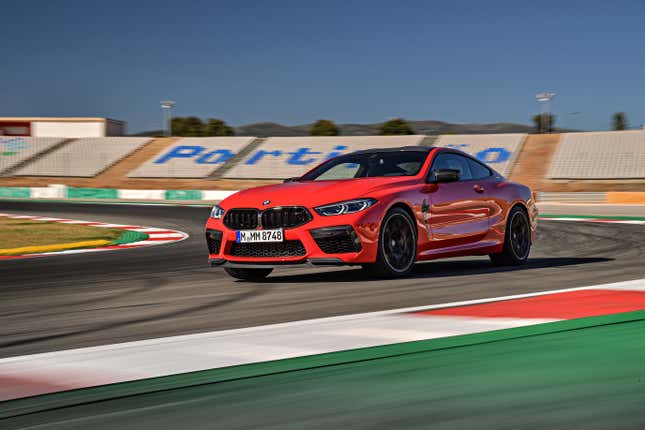
In addition to smarter braking, the M8 offers the ability to play with several other characteristics to dial the car in to the driver’s preferences. Engine (Efficient, Sport and Sport Plus), Suspension (Comfort, Sport and Sport Plus), Steering (Comfort and Sport), and Drivetrain (4WD, 4WD Sport and 2WD).
To more easily access all of these modes BMW has placed a new M Mode button on the center console which allows the driver to individually configure their driver assistance settings, instrument cluster and HUD settings and access them with the touch of a single button.
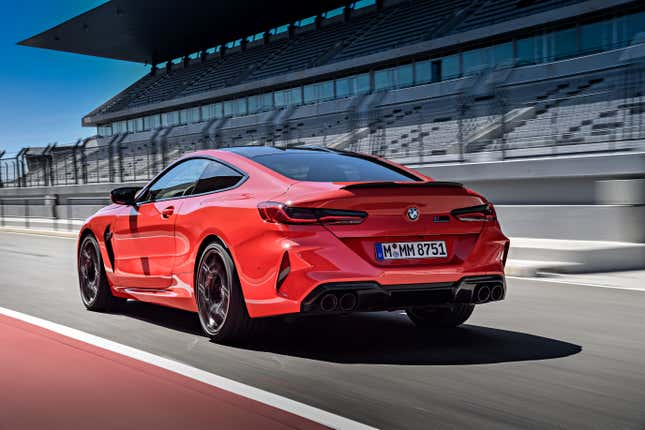
The Competition has a Track mode that is accessed by pressing and holding down the M mode button. In this mode, all driver assistance systems are turned off along with the audio system and center control display so the driver can devote 100 percent focus to the job at hand. In my case, this was used while trying to reel in a rapidly disappearing Nicky Catsburg.
It seems that even though I had correctly activated the Track Mode, the BMW mechanics dropped the tire pressures on my M8 just prior to me hitting the circuit and that reduction in pressure was enough to trigger the M8’s TPMS warning system. This kicked on all of the M8’s driver assistance nannies to make sure I didn’t try to do anything silly while running at full speed on a damp race track with low tire pressures. (Come on, silly? Who, me?)
After a quick stop to reset everything, I rolled the M8 back on track and was able to get in several laps at full pace. My verdict: out there, the M8 Competition is an absolute beast.

In 2WD mode, with 617 HP, enough torque to momentarily stop the Earth from spinning and wet-ish conditions, you would think that it would be near impossible to get enough traction to even get the car moving—let alone turn a quick lap. You’d be wrong. With that power going straight to the rear, the M8 was a bit tail happy but it did nothing that felt abrupt. It was more fun than scary. In 4WD Sport mode, the M8 is an all-wheel drift monster.
For example, Turn 7 at Portimao is a long, 110+mph, sweeping uphill corner over a blind crest that, in the dry, you can take at full throttle. But only just. In short, it’s not a corner that inspires a huge amount of confidence. But the M8 handled it with utter aplomb.
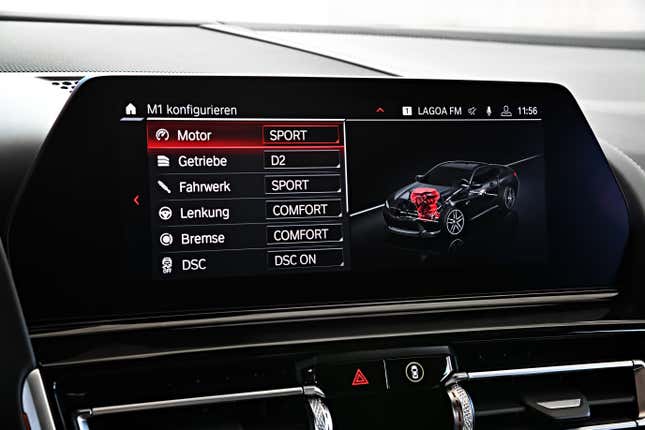
With the M8 in 2WD mode, you would turn in for the corner and have to do a big lift off the throttle as the rear end would start to come around just at the crest of the hill. It wouldn’t snap loose, but would slowly break free with plenty of warning to the nut behind the wheel. (I’ll say it was still a bit sphincter-clenching with somebody else’s six-figure car.)
In 4WD Sport mode, the exact same thing would happen but this time instead of lifting you just keep your foot to the floor and wait as the rear starts to come around. If you have the guts to keep the throttle pegged your confidence is rewarded by the feeling of power being shifted to the front wheels. This results in the most perfect four-wheel drifts over the crest.
Hero stuff. Lap after lap after lap.
All this drama is accompanied by one of the better V8 soundtracks currently on the market. It’s not as aggro as a normally aspirated V8, as the turbos do mute a bit of that sound. But it still does the M8 justice.

One of the great things about a car this chock full of technology is that once you’re done chasing works drivers around the circuit, you can simply drive it off the track and on to the highway with no sacrifice. All of the suspension, engine mapping, transmission shift points and so on just adapt to the surroundings.
As hardcore as the M8 is on the track it is a much tamer beast on the road. Still eminently capable, but without need to put all of that ability out front.
In fact, it’s only when you start cursing traffic for moving so slowly that you look down at the speedo and realize that you are going close to double the speed limit (not me mind you, one of the other guys...) that you realize how incredibly capable the M8 really is.
Early Verdict
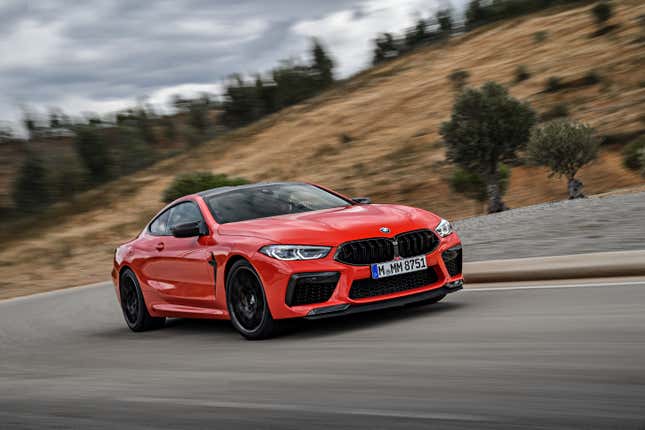
It’s unfortunate that the handful of M8 Competitions that BMW had brought to the circuit are probably the only M8s that will ever take to a race track in anger. Because it’s actually an incredibly competent track day car with huge power, sublime handling at the limit in 4WD mode and the ability to run all day without overstressing the car or its cooling system.
BMW has created a car that is the definition of a classic grand tourer, but one that has no problem rolling up its sleeves and getting down and dirty at the limit. Styling aside, if you’re looking for a step up from theM850i, you won’t be disappointed in the M8. The increase in power alone is worth the price of admission. But it’s the full range of ability that the M8 has over the M850i that puts it on top.
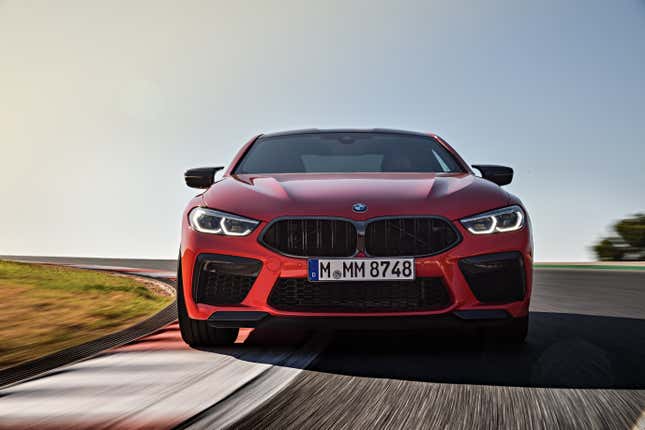
When I drove the M850i last year, I likened it to a car that’s both Clark Kent and Superman—civilized when it wants to be, ultra-powerful when it needs to be. But the M8 is Superman when he dumps the secret identity and wears the cape full time. All he does is kick ass and chill at the Fortress of Solitude. Nothing is held back here.
If that’s the M car you’ve spent almost 30 years waiting for, you won’t be disappointed here.





